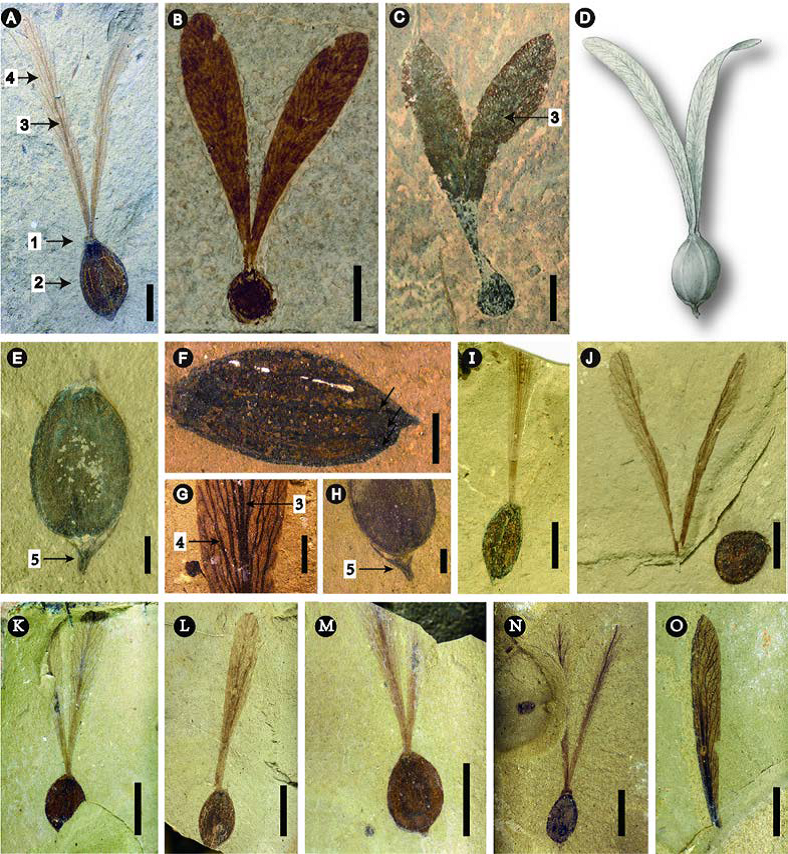Lagokarpos is an extinct genus with uncertain modern affinity. Previously, it had only been found in western Northern America and Germany. Lagokarpos is characterized by fruits with two wings with an appearance similar to that of rabbit ears. Lagokarpos exhibits similar fruit morphology to several extant taxa, such as Gyrocarpus and even some member of the typical tropical family Dipterocarpaceae. However, evidence is not strong enough to assign it to any one of these taxa using morphological comparison.
During their palaeobotanical investigations in the Qinghai-Tibetan Plateau (QTP), researchers from Xishuangbanna Tropical Botanical Garden (XTBG) found well-preserved fossil fruits of Lagokarpos from the Niubao Formation, near Bangoin County on the central QTP.
The fossil fruits consisted of two elongate V patterned wings arising from the apex of an elliptical fruit body. Wings are entire-margined and pinnate venation patterned.
In comparison with former fossil records from North America and Europe, the new record is defined as a new species. The researchers named it as Lagokarpos tibetensis and got it published in Journal of Systematics and Evolution. The specific epithet, ‘tibetensis’, refers to where the fossils were collected.
“This finding is the first fossil record of Lagokarpos in continental Asia and greatly expands the known distribution of Lagokarpos”, said Prof. SU Tao, principal investigator of the study.
Based on the fossil history, the occurrence of Lagokarpos on the central QTP suggests the age of the Jianglang section may be latest Paleocene to early middle Eocene.
The occurrence of these special extinct fossil fruits of Lagokarpos indicate there were close floristic affinities throughout the Northern Hemisphere, including QTP.
“Moreover, this finding indicates subtropical humid environments during the latest Paleocene to middle Eocene”, said Prof. ZHOU Zhekun of XTBG.
Contact
SU Tao Ph.D Principal Investigator
Key Laboratory of Tropical Forest Ecology, Xishuangbanna Tropical Botanical Garden, Chinese Academy of Sciences, Mengla, Yunnan 666303, China
E-mail: sutao@xtbg.org.cn
Lagokarpos.
A, E, F, G, H, I, J, K, L, M, N, O, Lagokarpos from Tibet, China. B, Lagokarpos from North America. C, Lagokarpos from Messel Pit.
D, reconstruction of Lagokarpos. E, fruit body. F, stripes on the fruit. G, pinnate veins on the wings. H, stripe at the base of the fruit
(Images by TANG He)

